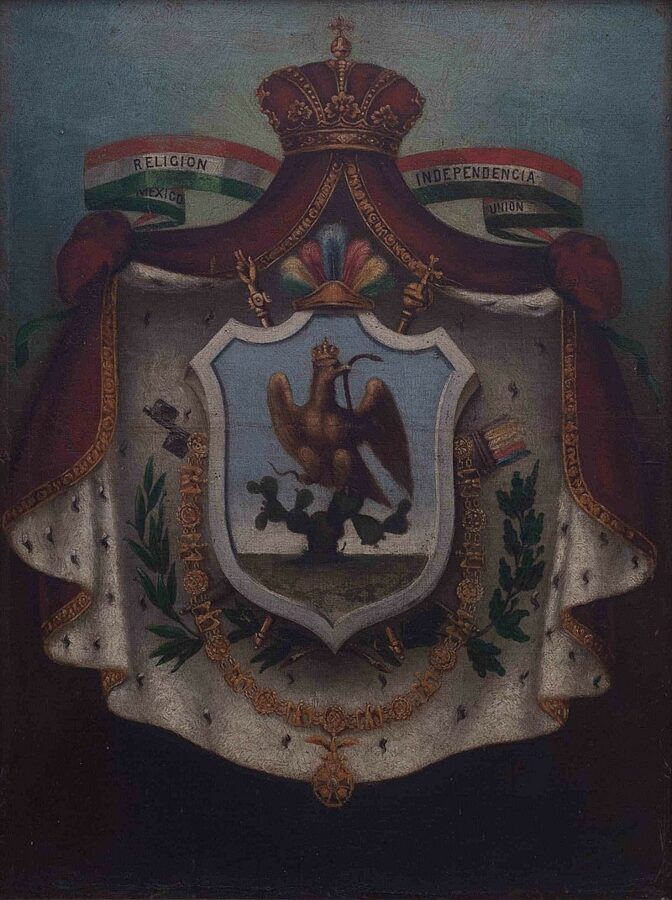Mafia - Bigg Boss
Video Game - Bigg Boss
Sensors - Bigg Boss
AI to Singularity - Bigg Boss

ASI

Tajmahal Mughal Kingdom
"A Monumental Ode to Love"
Taj Mahal, Agra Overview
One of the seven wonders of the world, Taj Mahal is located on the banks of River Yamuna in Agra. It was built by the Mughal Emperor Shah Jahan as a memorial for his third wife, Mumtaz Mahal. It also houses the tomb of Shah Jahan himself. Constructed entirely out of white marble in the 17th century, Taj Mahal is one of the most beautiful monuments in the world. Every year visitors numbering more than the entire population of Agra pass through the magnificent gates to catch a glimpse of this breathtaking monument!
A UNESCO World Heritage Site, the Taj Mahal stands for the Crown of Palaces in the Persian language. The tomb is laid out in a rectangular shape and can be approached through a massive gateway which has an arch and alcoves on either side of it. There are water channels and fountains in the entrance which makes the monument even more spectacular. The reflection of this majestic spectacle in the Yamuna is almost poetic in its perfection!
Covering an area of approximately 42 Acres, the construction of the Taj Mahal began in 1631 and it took 17 years before it was completed in 1648! It was constructed using white marble obtained from Makrana in Rajasthan.

Tajhat Palace

About 76 meters long, 2 stories of the edifice, The Tajhat Palace has a spectacular front look. A ribbed conical dome supported by using a tall octagonal neck is positioned in the middle of the roof and crowns the palace. The railing initially featured marble sculptures of conventional Roman figures, those have disappeared since long back.
These are just some of the superb aspects that continue to attract visitors from around the world to this small corner of the earth. This 100-year-old palace is truly a superstructure and visitors often discover themselves astonished by the details of craftsmanship that is found in every corner of this edifice.
The material, white stones, marbles stone, limestone and redbrick were used to build this magnificent palace were imported from different parts of the subcontinent. There were 2000 people worked together to build this royal palace and spent almost 1.5 million USD the then time.
The name Tajhat came from where? No one knows exactly but, the historian says that Gopal Lal Roy was a jeweler by profession who migrated from Panjab up to Rangpur and made his fortune here. As was a jeweler and he worked with the golden “Taj” means crown and “hat” means Local Bazar. Later he became the Zamindar of Tajhat estate as a minor after his father passed away.
This palace also was a place to celebrate the Pahela Baishak (Bengali New Year) along with the “Bau Mela” (fair of wives) for women. There was another type of festival was celebrated in this palace called “Kite Festival” for the children during the Pahela Baishak (the first two days of Bengali new year).

During the period of General Ershad, this palace was used as a Rangpur High Court Brach of the Supreme Court of Bangladesh from 1984 to 1991. Later, in 1995, the Department of Archaeology has declared this place as a protected monument.
To recognize the architectural value, the Government of Bangladesh has converted the 2nd floor of this palace into Rangpur museum in 2005. Then there are also some terracotta relics of the 10th and 11th century on the 2nd and 3rd floor and there also you will find some materials used by Maharaj Gopal Lal Roy the then time in the palace.
There are also some manuscripts, including some copies of Mahavarat, Ramayan and a Quran. In rooms in the backside, you will also find some black stone Hindu carvings that are mainly of the deity Vishnu. Photography inside the museum premises is prohibited.
From 10.00 am to 06.00 pm, Tajhat Palace is open for the visitors 7 days a week. However, the museum located on the 1st floor of the palace has a timetable as below. Only on Sunday, the museum will remain closed but the palace will remain open all the time.
Summer timing ( April – September )
Tuesday - Saturday : 10 . 00 AM - 01 . 00 PM and 01 . 30 PM - 06 . 00 PM
Friday : 10 . 00 AM - 12 . 30 PM and 02 . 30 PM – 06 . 00 PM
sunday : Weekly Holiday
Monday : 02 . 30 PM - 06 . 00 PM
Winter timing ( October – March )
Tuesday - Saturday : 09 . 00 AM - 01 . 00 PM and 01 . 30 PM - 05 . 00 PM
Friday : 09 . 00 AM - 12 . 30 PM and 02 . 00 PM - 05 . 00 PM
Sunday : Weekly Holiday
Monday : 01 . 30 PM - 05 . 00 PM
During Eid Holidays: Tajhat Palace will remain closed for visitors during Eid day and the previous day of Eid but It will remain open as usual from the next day of Eid day.
Timing during Ramadan: Tajhat Palace will be closed just at 04. 00 PM during the holy month of Ramadan.
All Govt. Holidays: Tajhat Palace will remain closed during any govt. holiday.
Roman Egypt
Her Majesty Queen Rania Al Abdullah
Rania Al Yassin was born on August 31, 1970. She obtained her bachelor’s degree in Business Administration from the American University of Cairo in 1991. She applied this, first, to a banking career in Jordan and, later, to the information technology sector.
On June 10, 1993, she married then Prince Abdullah bin Al Hussein, who assumed his constitutional role as King of the Hashemite Kingdom of Jordan on February 7, 1999. They went on to have four children: Crown Prince Al Hussein, Princess Iman, Princess Salma, and Prince Hashem.
In addition to being a wife and mother, Queen Rania works hard to improve the lives of Jordanians by supporting efforts to create opportunities for their advancement.
Locally, she is committed to breathing new life into the public education system, empowering women and their communities, improving child and family protection services, and driving innovation, technology, and entrepreneurship through society, especially amongst young people.
Internationally, Queen Rania is an advocate for tolerance, compassion, and promoting empathy between people of all cultures and backgrounds. Her efforts to challenge stereotypes of Arabs and Muslims and promote greater understanding and acceptance between people of all faiths and cultures have won her global recognition.
Her Majesty believes that every Jordanian child should have access to not only stimulating learning environments, but also inspiring teachers and technology that connects them to the world. The Queen Rania Foundation for Education and Development (QRF) contributes to national efforts to develop the education sector through initiatives such as the Queen Rania Teacher Academy, Madrasati, Edraak, Al-Aman Fund for the Future of Orphans, and others. To realize these goals and so much more, Queen Rania encourages private sector partners to strengthen the foundations of Jordan’s education system.
Queen Rania is also a global voice for access to quality education for children around the world. In 2009, Her Majesty championed the 1 Goal campaign for education. She also served as a Global Honorary Chair of the UN Girl’s Education Initiative, and has advocated access to education in international forums and gatherings.
Additionally, Her Majesty advocates for the rights, needs, and aspirations of refugees and the world’s most vulnerable populations. She has taken part in numerous related global events, including co-chairing a roundtable at the 2016 UN Summit on Refugees and Migrants, and has visited refugee camps in Jordan, Greece, and Bangladesh.
Through her position on their boards, Her Majesty contributes to the work of the United Nations Foundation and the World Economic Forum. She is UNICEF’s first Eminent Advocate for Children, and she was on the UN-appointed High-Level Panel that advised on the shape and content of the Sustainable Development Goals, which aim to improve the lives of millions of people before 2030. Her Majesty also serves on the International Rescue Committee’s (IRC) Board of Advisors following the conclusion of her term on its Board of Directors.
In recognition of her work, Her Majesty has humbly accepted many awards, locally, regionally, and globally. These include the Foreign Press Association’s Humanitarian Award; the Andrea Bocelli Foundation Humanitarian Award; the World Childhood Award, granted by Her Majesty Queen Silvia of Sweden; the Walther Rathenau Award; the Atlantic Council Global Citizen Award; the James C. Morgan Global Humanitarian Award; the Arab Knight of Giving Award; the Vital Voices Global Trailblazer Award; the Influential Personality of the Year Award, granted by Deputy Ruler of Dubai His Highness Sheikh Maktoum bin Mohammed bin Rashid Al Maktoum; as well as the YouTube Visionary Award.
Her Majesty has authored several children’s books, including the New York Times best-seller, the Sandwich Swap, which was inspired by her own childhood experiences.
First Mexican Empire
The Mexican Empire (Spanish: Imperio Mexicano, pronounced [ĩmˈpeɾjo mexiˈkano] (![]() listen)) was a constitutional monarchy, the first independent government of Mexico and the only former colony of the Spanish Empire to establish a monarchy after independence. It is one of the few modern era, independent monarchies that have existed in the Americas, along with the Brazilian Empire, and the First and Second Haitian Empires.
listen)) was a constitutional monarchy, the first independent government of Mexico and the only former colony of the Spanish Empire to establish a monarchy after independence. It is one of the few modern era, independent monarchies that have existed in the Americas, along with the Brazilian Empire, and the First and Second Haitian Empires.
Agustín de Iturbide, the sole monarch of the empire, was originally a Mexican military commander under whose leadership independence from Spain was gained in September 1821. His popularity culminated in mass demonstrations on May 18, 1822, in favor of making him emperor of the new nation, and the very next day congress hastily approved the matter. A sumptuous coronation ceremony followed in July.

Coat of arms of the First Mexican Empire
Kingdom of the Netherlands
The countries of the Kingdom are Aruba, Curaçao, St Maarten and the Netherlands. The countries work independently on some issues and they work together on others. These are called ‘Kingdom affairs’. The Charter for the Kingdom of the Netherlands explains what the countries do together and what they do independently.
Each country has its own government. There is also a Council of Ministers for the Kingdom, made up of the Netherlands’ government ministers and one minister each for Aruba, Curaçao and St Maarten.
https://www.netherlandsandyou.nl/about-the-kingdom/one-kingdom---four-countries